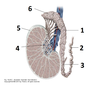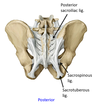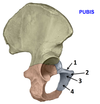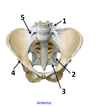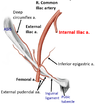Anatomy Flashcards
(180 cards)
1? 2?


5? 6? 7?


1? 2? 3?


Green arrow?

Postganglionic sympathetic fibers (they synapsed in the ganglion) leaving the sympathetic chain and joining a sacral nerve (S1). Will leave the pelvis with to go to the legs to nnervates blood vessels, sweat glands, hair follicules, etc.
Where are the 3 potential sites of obstruction of the ureters in case of kidney stones?
- at the junction of the ureters and the renal pelvis
- where the ureters cross the brim of the pelvic inlet
- during their passage through the wall of the bladder

3? 4?


3? 4? 5?


Red arrow?

Sacral splanchnic nerves - Preganglionic sympathetic fibers (they came down the chain) which will synapse in the inferior hypogastric plexus. They provide sympathetic innervation to the pelvic organs.


4? 5?


7? 8?


3? 4?


1? 2?


1? 2? 3?


1? 2?


1? 2?


3? 4?

3: Crus
4: Bulb of the vestibule
4? 5? 6?


4? 5?


3? 4?


1? 2?


25? 26?


5? 6?


9? 10? 11? 12?








































































